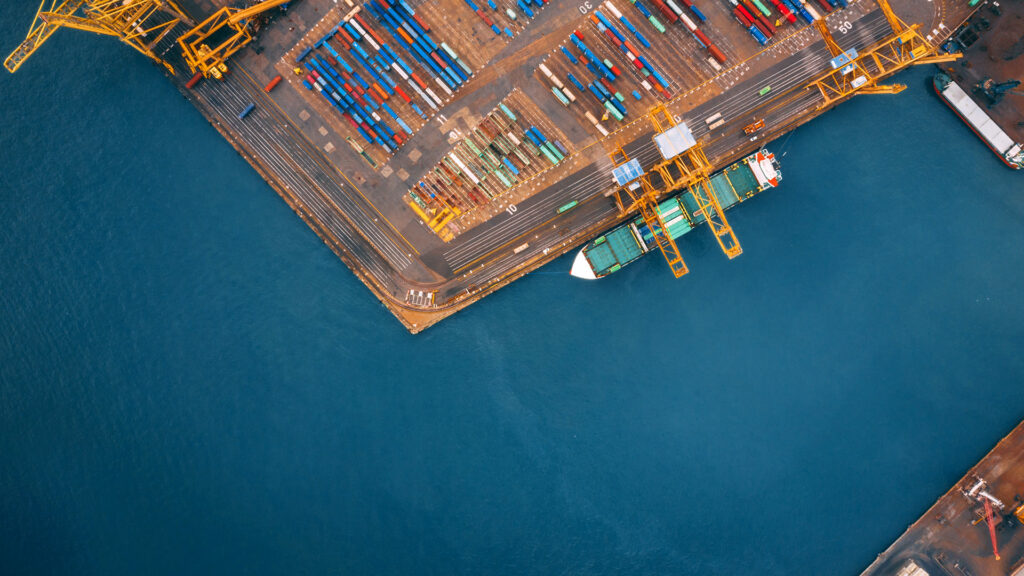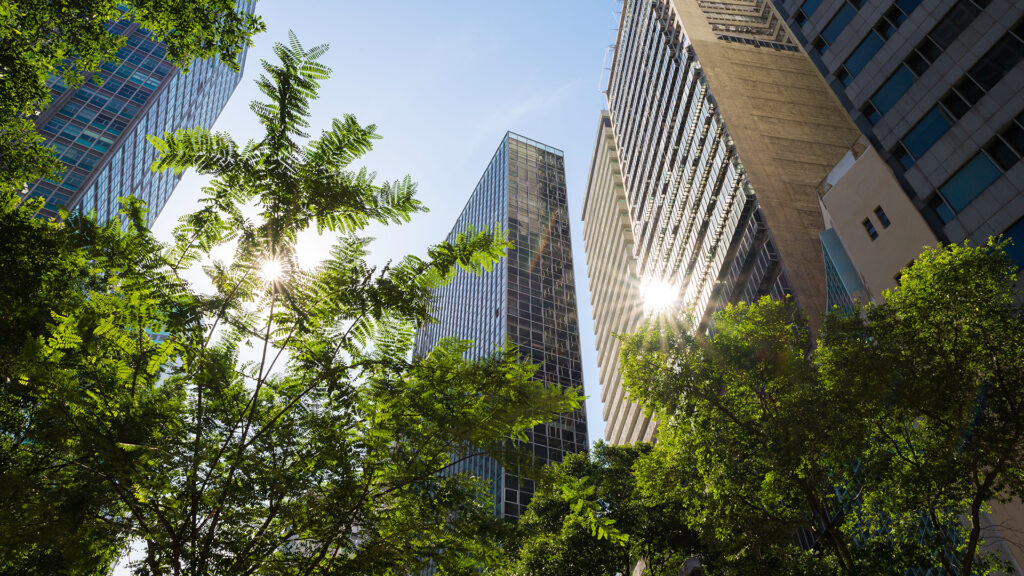
Commodities Bulletin, April 2024
Welcome to the April edition of the HFW Commodities bulletin, which features articles from colleagues across our Australian offices.
We begin with an article on current issues in the Australian grain market from Stephen and Associate Livija Berzins, followed by a piece from Ranjani and Associate Johnny Petrushnko, looking at how digitisation and due diligence can help mitigate the risk of fraud in the commodities sector. Australia is one of the world’s largest exporters of LNG and in his article, newly promoted Partner Peter Sadler assesses the initial findings of Western Australia’s DomGas inquiry and its implications for global LNG markets. We finish with an indepth piece from Partner Jo Garland and Special Counsel Darren Yeoh in Perth, on the opportunities and challenges in producing green steel in Australia. On the back page, you can find out where to meet us next and read our team news, including of our newly promoted partners and legal directors – congratulations, all!
Current Issues in Australian Grain Markets
Despite uncertain global conditions over the last three years, Australia has enjoyed a period of high grain production, high grain prices and steady exports. However, there are signs that Australian grain producers and exporters may face increasing challenges over the coming months.
The Australian grain industry has many strengths, including high quality products, a reliable supply chain and a secure contracts and trade rules regime based on the rule of law. Higher-than-average rainfall in recent years has led to strong levels of Australian grain production, meaning producers and exporters have been able to provide a consistently high quantity of quality product, in a global environment where other major grain producers have faced significant challenges.
The Australian grain market has been able to weather major disruptions in recent years. The impacts of the Covid-19 pandemic on global trade are well known. Lockdowns imposed all over the world wreaked havoc on supply chains, impacting exports in most industries, including grains. However, despite many challenges, Australian grain production and exports performed well throughout the Covid-19 lockdowns in the financial years 2020/21 and 2021/22.
The outbreak of the Russia-Ukraine war in February 2022 resulted in reduced and unreliable grain supply from both Russia and Ukraine, two of the world’s largest grain producers. Ukrainian grain supply was heavily impacted as a result of Russian attacks on Ukrainian ports and infrastructure and threats to existing shipping routes, despite international efforts to secure safe trade corridors. While Ukrainian grain supply has now stabilised more than might otherwise have been expected, Ukraine still faces challenges and uncertainty in the face of ongoing attacks which will continue to impact the reliability of its grain exports.
In recent years, Australia has been able to increase grain exports to many of its major trade partners including China, Indonesia and Vietnam. Last year, China increased its wheat imports from Australia after its own crop was damaged by adverse weather.
However, Australian grain suppliers appear set to face challenges over the coming months.
Russia is expecting a bumper wheat harvest this year and has offered grain on the international market at rates significantly lower than the previous season’s prices. In fact, wheat harvests in the Northern Hemisphere are generally expected to be high this year, increasing concerns of a global oversupply of wheat.
As a result, there are reports that Chinese importers have cancelled or postponed approximately one million metric tonnes of Australian wheat shipments, in favour of new contracts with Russian suppliers for cheaper product.
China has also reportedly cancelled or postponed approximately 500,000 metric tonnes of US wheat shipments, signalling a sizeable shift in approach towards procurement of cheaper Russian grain over higher quality but more expensive product from jurisdictions such as Australia and the US.
While the EU is expected to impose tariffs on Russian grain exports soon, it is still possible that importers from other countries will follow China’s lead in the coming months.
In addition to the above challenges, Australia faces uncertain growing conditions. While the probability of a La Niña weather event bringing increased rainfall is growing on the east coast, conditions in the west have been dry over the past 12 months with an uncertain outlook for the upcoming winter period. This will inevitably impact Australian grain production, with the potential for lower-than-average harvests this year.
In times of uncertainty where importers may be walking away from existing supply contracts, particularly contracts where grain prices have already been agreed, suppliers seeking compensation for cancelled agreements will need to have recourse to the terms and conditions of their contract in order to determine what are their rights under the agreement.
For Australian grain traders who may be affected by cancelled or postponed contracts, proactively identifying which of their contracts may be vulnerable to cancellations will be critical, as will carefully ensuring their own strict performance, so as to not allow a buyer the opportunity to terminate without recourse.
Of course, having a strong claim is of no practical benefit unless it can be pursued in a reputable forum and enforced against the counterparty. That requires a robust due diligence process to be observed before entering into a trade but unfortunately, some sellers will have been lax with such processes during the good times where buyers had fewer alternative suppliers.
The Australian grain industry has proven itself resilient in recent years, and we are confident that with the right advice and preparedness exporters will continue to do well in the face of new challenges.
Stephen Thompson and Livija Berzins
Minimising Fraud in the Commodities Sector – digitisation and due diligence
Fraud remains a continuing challenge for the commodities industry. The sector is susceptible because it involves long distance trading between parties who may not be well known to each other and where the goods themselves may be difficult to check or monitor. It is also traditionally dependent on the use of paper documentation, from warehouse receipts to bills of lading. This article considers progress towards digitisation and its effect on minimising fraud in the commodities sector.
Recent high-profile examples of fraud illustrate the risks associated with monitoring goods and paper documentation:
- In 2023, Trafigura reported a loss of US $590 million after shipments of nickel were replaced with lower value materials. It was only after nickel onboard a vessel was verified by the financier that the discrepancy was discovered.
- Also last year, the founder of Hin Leong Trading Pte Ltd stood trial, having been accused of 130 counts of forgery and cheating. The founder was exposed for providing fraudulently documents to banks to secure loans, owing 23 banks over A$3.5 billion, including Australia’s ANZ Bank, which was owed approximately A$205 million and Westpac Bank, which was owed A$60 million.
Digitisation – a partial solution
One way to mitigate against the risk of fraudulent documentation is to move towards digital trading, through the use of electronic bills of lading and receipts. This reduces the risk of fraud associated with paper documents and makes trading systems more secure and reliable. For example, digitisation should allow parties to a transaction to see who is holding the bill of lading at any given moment and it is not possible for such bill of lading to easily change hands. Digitisation of documents would also have the added benefits of creating more efficient processing times and increasing sustainability by reducing the use of paper.
In an effort to enable the widespread use of electronic transferable records (including bills of lading, bills of exchange, promissory notes and warehouse receipts) and to promote a consistent approach towards their legal use and status, the UNCITRAL Model Law on Electronic Transferable Records (MLETR) was published in 2017. Until recently, uptake has been relatively slow, with only 9 countries having adopted it to date. However, momentum is now building. In September 2023, the Electronic Trade Documents Act 2023 (the Act) came into force in the UK, which is a key jurisdiction for international trade. This follows amendments made in 2021 to the Electronic Transactions Act in Singapore, which saw the first reported cross-border electronic transferable record trade completed between Singapore and Thailand last year. As reported in our previous bulletin1, France is expected to introduce similar legislation this year.
Although at the date of this bulletin, Australia has not adopted the MLETR or a domestic equivalent of the Act, the Simplified Trade System Implementation Taskforce has committed itself to providing A$28.3 million in funding from 2023-24 to support the adoption of MLETR. The objective is to implement legislative reform by June 2026, enabling paperless trade in Australia.
The use of electronic bills of lading is now spreading in the industry as confidence grows. The Future International Trade Alliance (FIT Alliance), which includes BIMCO, Swift, the DCSA and ICC, aims to raise awareness and encourage greater use of digital shipping standards and electronic bills of lading across shipping and multimodal transportation. The FIT Alliance reports that more than 100 organisations have now signed its “eBL declaration,” including Anglo American, Maersk, ONE, Evergreen, MSC, BNP Paribas and HSBC. Last year, BIMCO reported that four of the world’s largest mining companies (BHP, Rio Tinto, Vale and Anglo American) now transport 20% of their iron ore using electronic bills of lading, with a reduction in the risk of fraud identified as a benefit.2
Other solutions – practical steps
Despite this progress, currently digitization continues to offer a limited solution to the risk of fraud in commodities trading. There are obvious difficulties with cross-border transactions until the adoption of MLETR-type legislation becomes more widespread. Although confidence and momentum are growing, until recently the industry has not been quick to adopt change. With this in mind, there are practical steps that financiers and trading counterparties should take now to minimise the risk of fraud. These include:
- Due diligence and monitoring: Make inventory visits and appoint independent third parties to monitor goods and trace vessel movements, to ensure the voyage as described in the bill of lading is taking place. Where possible, make physical visits and inspections of the goods to ensure authenticity.
- Due diligence of counterparties: Investigate the reputation and financial standing of counterparties regularly as they can be subject to change.
- Legitimacy of warehouse receipts: Verify for authenticity stickers and watermarks on warehouse receipts without relying on third parties to carry out such vital checks.
- Insurance: Verify insurance contracts to ensure they include express clauses to cover fraud.
- Risk Assessment: Be wary, investigate further where there is a lack of comprehensive documentation or unrealistic pricing.
Above all, time is of the essence and so it is key to have a strategy in place to respond quickly when concerns arise.
Ranjani Sundar and Johnny Petrushnko
Footnotes:
- https://www.hfw.com/Commodities-Bulletin-February-…
- Electronic bills of lading (eBLs) are already transforming the iron ore… (bimco.org)
Western Australia’s DomGas inquiry and its implications for global LNG markets
In our December 2023 LNG bulletin1, we reported on the state of the Australian LNG market, including Western Australia’s domestic gas reservation policy (the DomGas Policy). Whilst widely praised for keeping domestic gas prices low since its inception in 2006, recent gas price increases and forecast supply shortfalls in Western Australia have led to major gas users calling for a review into the policy. This led to an inquiry into its adequacy by the Economics and Industry Standing Committee (the Committee) of the Western Australian State Parliament, which commenced in June 2023. The interim report of the Committee’s findings and recommendations has now been published.
Broadly, the Committee has concluded that the DomGas Policy is no longer fit for purpose and there is now a case for government intervention.
Why does it matter?
The efficacy and operation of the DomGas Policy matters not just to domestic consumers in Western Australia (WA) but also to global LNG markets. Australia is one of the world’s largest exporters of LNG with two of its major producers, Woodside and Chevron, having projects based in WA. The amount of LNG available for export is closely connected to the stability of domestic gas supply.
What is the DomGas Policy?
The DomGas Policy has three limbs:
- Reserving domestic gas equivalent to 15% of LNG production from each LNG export project.
- Developing and obtaining access to the necessary domestic supply infrastructure (including a domestic gas plant, associated facilities and pipelines) to process and deliver that gas.
- Demonstrable diligence and good faith in marketing gas to existing and prospective customers.
When an LNG project requires an access arrangement with the State government for land and other approvals (in the form of a State Agreement), the project proponents must commit to the DomGas Policy.
Why was an inquiry needed?
The main concern is to ensure security of domestic gas supply. Two particular issues have been identified:
- A number of the State Agreements do not specify when the 15% of LNG production must be offered domestically. That has led to a concern that certain LNG projects are leaving their domestic commitment to be fulfilled to the end of the project, when gas reserves are less certain.
- In the face of rising domestic prices, domestic buyers are calling for more transparency in domestic gas sales to ensure the “good faith in marketing” limb of the DomGas Policy is being observed.
What are the inquiry’s findings?
The Committee’s interim report was published on 22 February 2024. A summary of the key findings is below:
- There is a credible risk that WA will face a substantial gas supply shortfall.2
- The DomGas Policy has encouraged the market to respond to surpluses or shortfalls. Given the prospect of extended and significant shortfalls, it is evidently no longer fit-for-purpose.
- LNG producers have on average delivered around 8% of domestic gas relative to LNG exports. The policy DomGas calls for 15% to be reserved. (HFW comment – note the timing difference in wording here between “delivered” and “reserved”.)
- Present reliance on implementation of the DomGas Policy by State Agreements lacks consistency, transparency and enforceability. Indeed, each State Agreement is different.
- Some gas producers apply the terms of their domestic gas agreements strictly and seemingly without regard to either the spirit of the DomGas Policy or their social contract with the WA community. The Pluto State Agreement provides that the obligation to supply DomGas is subject to it being “commercially viable” to do so, a provision on which Woodside continues to rely. (HFW comment – this is likely due to the cost of stripping inert gasses out of the raw gas from the Pluto field, which is reportedly high in nitrogen).
- There is competing evidence as to whether allowing onshore producers to export LNG would increase the volume of gas delivered to domestic consumers. It is not clear whether this would remedy the forecast gas shortfall given the time to bring new projects online. However, if greater pools of capital were available, this may facilitate the faster development of the resource and deliver greater volumes to the domestic market (over the longer term).
- There is a case for the government to intervene in the domestic gas market.
- Industry-led responses to the forecast domestic gas shortfall are preferrable to market intervention. However, it may be appropriate for government intervention to be deferred or suspended if a timely and effective industry-led response is implemented.
- Government should be sensitive to the sovereign risk issue, but: (1) every industry risks regulatory change over time; (2) not all sovereign interventions are equal; and (3) while the State’s economic prosperity may depend in part on its reputation as being low sovereign risk it also depends on having secure and affordable gas.
- Government interventions could be targeted at those who are not acting in accordance with the spirit of the DomGas policy.
What are the Committee’s conclusions?
The key conclusions are stark:
- Application of the DomGas Policy in its current form is unlikely to mitigate an imminent and potentially severe gas supply shortfall.
- This shortfall is likely to threaten thousands of WA jobs, jeopardise billions of dollars’ worth of economic activity and derail the State’s decarbonisation agenda. Although the DomGas Policy’s principles are intended to protect Western Australians from situations like these, it is not robust enough to ensure that an adequate supply of gas will be delivered to the domestic market.
- There is considerable variation in the amounts of domestic gas delivered by LNG producers relative to their LNG exports. The State has relied on producers to do right by Western Australians in adhering to the principles and spirit of the DomGas Policy. However, the Committee believes there is now a case for government intervention.
HFW Comment
This is only an interim report and the Committee’s specific recommendations have yet to be published. However, it is clear that WA producers can expect the domestic regulatory regime to change and to be enforced more rigorously. The Committee has suggested that an industry-led response would be welcome, and on 26 March 2024, Woodside announced that it was committing additional gas for domestic supply in 2024 and 2025.
The impact on global LNG supply, including whether the WA government will see an increase in exports to be part of the solution by facilitating the development of new resources, or legislate a diversion of export to the domestic markets, is uncertain at this stage.
Peter Sadler
Peter Sadler
Partner
Perth
Tel: +61 (0)8 9422 4702
Footnotes:
- https://www.hfw.com/LNG-Bulletin-December-2023
- Australian Energy Market Operator, AEMO, forecasts a 5% shortfall in 2023 rising to 11% by 2026; however, the shortfall then drops to 0% in 2029.
Producing Green Steel in Australia and the role of Green Hydrogen: the Opportunities and Challenges
Investment in, and the production of, “Green Hydrogen” in Australia is gaining momentum and is seen as a key pillar in Australia’s decarbonisation journey in the medium to long-term. The opportunity to produce Green Hydrogen through renewable electrolysis of water is emerging throughout Australia as we develop and increase renewable energy capacity (predominantly via solar and wind). This in turn offers the potential to use that “Green Hydrogen” to produce “Green Steel”, demand for which is predicted to rocket. There are opportunities and challenges in domestic production – particularly, whether it is the best use of Australia’s renewable energy resources and whether it can compete with traditionally produced steel.
What are “Green Hydrogen” and “Green Steel?”
Hydrogen is produced when an electric current is passed through water to break it down into its component parts – hydrogen and oxygen. If the current is powered by renewable energy, such as hydro, solar or wind energy, then the resulting hydrogen is classified as Green Hydrogen. Other methods of producing hydrogen rely predominantly on fossil fuels to generate the current.
To produce Green Steel (also known as “fossil fuel free steel”), it is generally necessary to use:
- Green Hydrogen as a reducing agent in a direct reduction plant during the conversion of iron ore into iron using direct reduced iron (DRI) technology.
- renewable energy to power the electric arc furnace.
However, currently there is no accepted worldwide classification and standards for Green Steel –some steel being sold and marketed as Green Steel is produced by a more carbon intensive process, using natural gas for DRI production. While this is an improvement over traditional coal-based steel production, it is not as “green” as steel produced using hydrogen or Green Hydrogen. As such, the “shade of green” is not clear for Green Steel products at present and reaching agreed worldwide standards would help those focussed on producing truly Green Steel. This presents a risk, as other market participants may establish a first mover advantage over Australia with products that are “less green” but still able to be marketed as such.
The Opportunities
Traditional steel-making processes are highly carbon-intensive and contribute significantly to global carbon emissions. Steel production globally is currently responsible for approximately 8% of yearly human-derived carbon emissions.1 For Australia, a country rich in iron ore deposits and a major exporter of iron ore globally, there is a significant opportunity to transform the Australian economy and become a superpower in the global zero-carbon economy. 2
Australia is already an exporter of steel, but on a much lesser scale than major players such as China, India and Japan. However, in respect of Green Steel, Australia has four major advantages over traditional steel exporters:
- Immense iron ore resources, meaning that the key mineral for Green Steel is not dependent on imports.
- Large swathes of land well-placed for renewable energy generation, particularly solar and wind.
- Relatively low population density, so that it need not use all renewable electricity to service the energy demands of its population.
- Comparatively strong ESG credentials which may assist in attracting a green premium on its Green Steel.
However, the cost advantage of having domestic iron ore resources must be balanced against cost benefits enjoyed by competitor countries, including subsidies, cheaper natural gas and cheaper labour.
The Challenges
There are a number of challenges facing the production of Green Hydrogen. These range from the relative inefficiency of its production via electrolysis to the difficulties in storage and transport of hydrogen in its gas or liquid form. Green Hydrogen is a highly flammable gas with a low volumetric density, requiring investment in specialised pipelines and carriers.3
Cost
However, there are initiatives seeking to address some of these challenges, including improving the efficiency of the electrolysis process and reducing overall production costs.4 While the current cost of producing Green Hydrogen in Australia is about $5-6/kg, this is estimated to reduce to about $2/kg by 2030. At that price, Green Hydrogen production would be cost competitive with fossil fuel hydrogen production.5 The current additional cost for Green Steel over traditionally produced steel varies country to country, from a 20-50% premium. This is predicted to decrease as the cost of Green Hydrogen falls.6
Materials
Australia also faces the challenge that DRI steelmaking currently requires ores with a high iron content, not currently met by Pilbara’s commercial deposits. Potential solutions could include beneficiating Pilbara haematite ore up to DRI-grade and a switch to more magnetite mining, which is more amenable to beneficiation up to a higher grade. Technological innovation will likely also help: Rio Tinto, BHP and Fortescue are all reportedly investigating technology solutions that would allow the use of blast-furnace grade Pilbara iron ore in DRI-based processes. Research and development efforts must be accelerated if Australia and its miners are to remain global leaders here.
Demand
Even if Green Steel can be produced cost effectively in the future, there is uncertainty over global demand and a willingness to pay a green premium. Early indications are good: the global Green Steel market was valued at USD 200 million in 2022 but is projected to reach USD 364.5 billion by 2032.7 This will depend heavily on government policy and investment in Green Steel manufacturing, and the willingness of end users to pay more for Green Steel.
There are some positive early signs that there will be a global demand for Green Steel. BMW has announced its intention to use Green Steel (from Swedish steel manufacturer, H2 Green Group) in its cars, aiming to reduce up to 95% of its greenhouse gas emissions by 2025.8 Mercedes-Benz has also announced plans to launch vehicles manufactured using Green Steel as early as 2025.9
Competition
Australia’s biggest customer for iron ore is China. China is already assessing Green Steel opportunities in other markets, including the Middle East and Africa.
Existing initiatives to grow the Green Steel market
The introduction in October 2023 of the EU Carbon Border Adjustment Mechanism (CBAM) transitional phase and the impending definitive regime from 2026 will impact the Green Steel market. This is because CBAM will put a price on the carbon emitted during the production of select carbon intensive goods, including iron and steel. In simple terms, CBAM will incentivise EU importers to purchase steel with low embodied carbon (to reduce the amount of tax payable on the embodied carbon) and overseas producers will be incentivised to service the EU market with Green Steel.10 Further initiatives are needed to boost global Green Steel demand.
In Australia, the Federal government has invested in the production of Green Hydrogen, but not Green Steel directly.
Conclusion
A recent Grattan Institute report found if Australia captured about 6.5% of the global steel market, this could generate about A$65 billion in annual export revenue and create 25,000 manufacturing jobs in Queensland and New South Wales alone.11 In order to benefit, Australia will need to keep a watchful eye on the market, technological advancements to increase production efficiency, and strategic production opportunities. Others in the world market will be eyeing the same opportunity and so timing will be key to success.
Jo Garland and Darren Yeoh
Footnotes:
- Global green hydrogen-based steel opportunities surrounding high quality renewable energy and iron ore deposits, Nature, Devlin, A., Kossen, J., Goldie-Jones, H. et al. 4 May 2023.
- Green Iron: A Sustainable Steel Making Process, ZEN Energy.
- Energy Transition – 4 technologies that are accelerating the green hydrogen revolution, World Economic Forum, 29 June 2021
- New hydrogen electrolyser tech can help to decarbonise industry, CSIRO, Clair Jordan-Peters, 24 August 2023.
- What is green hydrogen, how is it made and will it be the fuel of the future, ABC Science, James Purtill, 23 January 2021.
- “Green steel” premium: to pay or not to pay, GMK Center, Stanislav Zinchenko, 26 September 2023.
- Green Steel Market Research, 2032, Allied Market Research, September 2023.
- As above.
- Green Steel: Volvo, Mercedes-Benz Announce Commitments to Fossil-Fuel-Free Steel, Industry Week, Ryan Secard, 25 June 2021.
- European Union, Taxation and Customs Union, Carbon Border Adjustment Mechanism.
- “Green steel” is hailed as the next big thing in Australian industry. Here’s what the hype is all about, The Conversation, 2 June 2021.
Events & Team News
Where you can meet the team next
London Partner, Matthew Cox will be attending the Trade & Investment Forum on 16th April hosted by BCR in partnership with ITFA.
Perth Partner, Jo Garland will chair a panel discussion at the 8th annual Energy and Mines Conference in Perth on 7th – 8th May. The panel will explore green commodities and how mines can balance expectations without valuations. To register for the event, please visit: https://lnkd.in/dfh55F5 and use the code HFW10 for a 10% discount.
Our Geneva and London Partners will be attending the annual GAFTA Dinner in London on 12th June.
We are silver sponsors for the upcoming Australia Wind Energy Conference in Melbourne on 9th-11th July. We have a keynote session on Day 1 at the Unlocking Wind Capital platform of the conference. More information here.
We are a long-time supporter of AGIC and are also pleased to sponsor AGIC Australia, which will be held in Melbourne from 31st July – 1st August. To register, visit: https://lnkd.in/gER6ydxd
Our commodities team will be hosting a two-part Commodities Spring Series. The series consists of two events, an in-person breakfast in London seminar (22nd May 9-11am) and a webinar (5th June 9-10am). Please email events@hfw.com for more information about the event.
We will be hosting a Commodities Summer Party in London on 19th June and welcome the opportunity to network with industry peers over drinks and canapes. Please email events@hfw.com for more information about the event.
For more information on upcoming HFW events, click here.
Other Team News
We are pleased to share that we have been shortlisted in the category of ‘Best Advisor of the Year’ in the C4DTI Digital Trade Awards. London Partners Matthew Cox and Matthew Wilmshurst will attend the awards dinner on 18th April 2024.
We are very pleased to introduce our newly promoted Commodities Partners: Edward Beeley (Hong Kong), Suzanne Meiklejohn (Singapore), Owen Webb (Melbourne) and Peter Sadler (Perth). In London, David Chalcraft has been promoted to Legal Director and Rosie Harrison and Gordon Rieck have been promoted to Senior Associate.
We welcome Partner Maurice Thompson and a team of seven lawyers who joined HFW in January 2024. Maurice has 30 years’ experience in Australia and the Middle East advising clients on complex large-scale disputes and litigation in the commodities, energy and resources, shipping, aerospace and insurance sectors. He also has substantial experience acting in class actions and litigation involving litigation funders in Australia and internationally.
Frazer Watt, Amanda Rathbone, and Manos Panagopoulos have published a client guide to the UK’s Critical Imports and Supply Chain Strategy. Please click here to read it.
Michael Buffham, Amanda Rathbone and Nadja Popovic recently co-authored an article on a recent judgment which illustrates how the GAFTA default clauses continue to cause issues of interpretation. Read the full article here.
HFW partner Peter Zaman joined Anna Stablum and Kaitlyn Allen from ClimeCo on the latest episode of the ESG Decoded Podcast. This followed our recent paper on ‘COP28: The failure to reach an Article 6 decision and the inconvenient truth’. You can listen to the podcast here. You can read the HFW COP28 paper here.
Download a PDF version of ‘European parliament approves landmark artificial intelligence act’.rnrn










